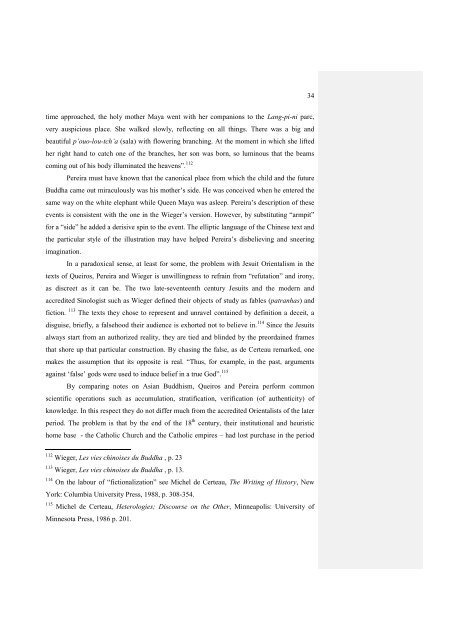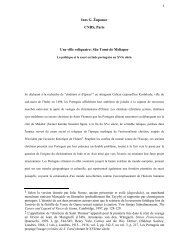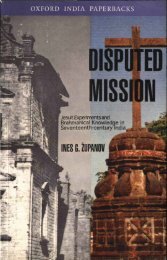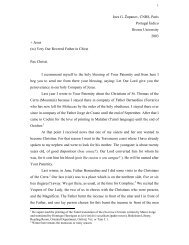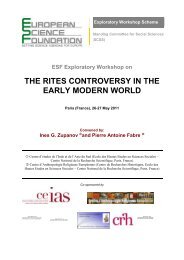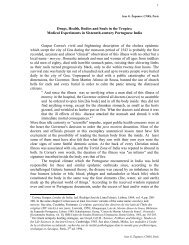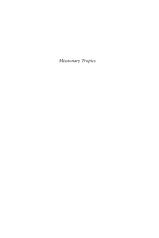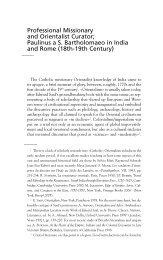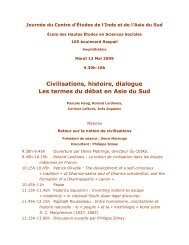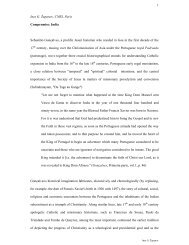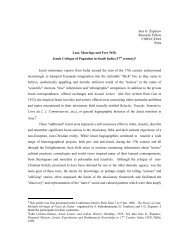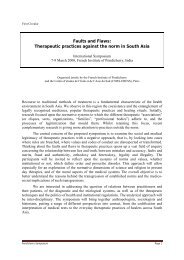Jesuit Orientalism; - Ines G. Županov
Jesuit Orientalism; - Ines G. Županov
Jesuit Orientalism; - Ines G. Županov
You also want an ePaper? Increase the reach of your titles
YUMPU automatically turns print PDFs into web optimized ePapers that Google loves.
34<br />
time approached, the holy mother Maya went with her companions to the Lang-pi-ni parc,<br />
very auspicious place. She walked slowly, reflecting on all things. There was a big and<br />
beautiful p‟ouo-lou-tch‟a (sala) with flowering branching. At the moment in which she lifted<br />
her right hand to catch one of the branches, her son was born, so luminous that the beams<br />
coming out of his body illuminated the heavens”. 112<br />
Pereira must have known that the canonical place from which the child and the future<br />
Buddha came out miraculously was his mother‟s side. He was conceived when he entered the<br />
same way on the white elephant while Queen Maya was asleep. Pereira‟s description of these<br />
events is consistent with the one in the Wieger‟s version. However, by substituting “armpit”<br />
for a “side” he added a derisive spin to the event. The elliptic language of the Chinese text and<br />
the particular style of the illustration may have helped Pereira‟s disbelieving and sneering<br />
imagination.<br />
In a paradoxical sense, at least for some, the problem with <strong>Jesuit</strong> <strong>Orientalism</strong> in the<br />
texts of Queiros, Pereira and Wieger is unwillingness to refrain from “refutation” and irony,<br />
as discreet as it can be. The two late-seventeenth century <strong>Jesuit</strong>s and the modern and<br />
accredited Sinologist such as Wieger defined their objects of study as fables (patranhas) and<br />
fiction. 113 The texts they chose to represent and unravel contained by definition a deceit, a<br />
disguise, briefly, a falsehood their audience is exhorted not to believe in. 114 Since the <strong>Jesuit</strong>s<br />
always start from an authorized reality, they are tied and blinded by the preordained frames<br />
that shore up that particular construction. By chasing the false, as de Certeau remarked, one<br />
makes the assumption that its opposite is real. “Thus, for example, in the past, arguments<br />
against „false‟ gods were used to induce belief in a true God”. 115<br />
By comparing notes on Asian Buddhism, Queiros and Pereira perform common<br />
scientific operations such as accumulation, stratification, verification (of authenticity) of<br />
knowledge. In this respect they do not differ much from the accredited Orientalists of the later<br />
period. The problem is that by the end of the 18 th century, their institutional and heuristic<br />
home base - the Catholic Church and the Catholic empires – had lost purchase in the period<br />
112 Wieger, Les vies chinoises du Buddha , p. 23<br />
113 Wieger, Les vies chinoises du Buddha , p. 13.<br />
114 On the labour of “fictionalization” see Michel de Certeau, The Writing of History, New<br />
York: Columbia University Press, 1988, p. 308-354.<br />
115 Michel de Certeau, Heterologies; Discourse on the Other, Minneapolis: University of<br />
Minnesota Press, 1986 p. 201.


